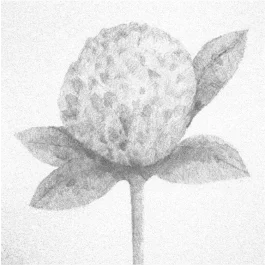
A pot of chives—that’s how it all started. I was well into the fourth year of homeschooling our five children here in New Hampshire, often doing our lessons outside sitting in the grass, hiking in the woods, or digging in the ground. We were a very hands-on family of learners.
The four boys were mostly interested in the snakes that would regularly dart out from under a pile of leaves or rotten tree stump only to disappear just as quickly. One unlucky snake was caught, becoming the object of a tug-of-war between the two oldest boys, each of whom declared he had seen it first. It didn’t end well for the snake, but lessons were learned that day about taking care of God’s creatures—and not fighting with your brother!
Emily, the only girl, was seven that year. She was a bright, happy child who, though she lived her life in a wheelchair due to a neuromuscular disease, never found cause to complain or throw a pity party. Instead, she delighted in the world, exploring everything she laid eyes on. This year, she was transfixed by a pot of beautiful purple (her favorite color) “pom pom“ flowers as they reached past grassy foliage to sun themselves on this warm Spring day. A friend of mine had gifted me with the extra-large terra-cotta pot of chives as her way of introducing me to the amazing world of herbs. The pot had found a home on the stoop by the front door and been summarily forgotten—until the flowers bloomed.
Never one to let a teaching moment pass by, I retrieved an herbal from our gardening books and began reading aloud about the life of chives. We examined the delicate flower, noting how the ball was actually made up of hundreds of tiny blossoms, which made the whole flower that much more impressive. When I explained that the leaves could be eaten and tasted like onions, Emily was a bit apprehensive about trying them out. Still, she claimed to be an explorer, so—in the interest of science—she gave it a go. She was quite surprised to find that she actually liked their mild taste. She called her siblings over, insisting that they, too, indulge in her newest discovery. Three out of four brothers approved and insisted we find a way to incorporate the herb into that evening’s meal. I decided on the classic baked potatoes topped with butter, sour cream, and chopped chives. The boys raced off to do some exploring on their own, leaving Emily and me to get to know the chives a little better.
When I read that the flowers are edible along with the foliage, I was stopped by a gasp. “What?“ Emily said. “I can eat the flowers? Let’s try them!“ The prospect of eating a beautiful flower was almost more than Emily could bear. She looked at the many offerings in full bloom and considered her selection like a glass of fine wine—first examining visually, then sniffing and holding it gently between her lips, and then popping the chosen blossom in her mouth. At first I couldn’t tell what the verdict was. Then her eyes lit up and she smiled a smile of sheer delight, highlighted by tiny purple blossoms stuck between her teeth.
“Oh, Mommy,” she sighed, “let’s plant a garden of chives.”
It’s been 24 years now since Emily left us. She passed quietly and quite unexpectedly one night while we all slept. Late that night, she called first to me and then to her daddy to come in and kiss her goodnight once more—as it turned out, for the last time. I often wonder if she knew…
It took about a year for our shattered family to find a new normal. A sweet little baby boy helped restore some joy. The second Christmas without my little ray of sunshine, one of the boys gave me a book on planning and designing an herb garden. At first I couldn’t even look at it without bursting into tears. But then we got the idea to create a garden in memory of Emily. We—and I mean we—built raised beds and filled them with peat moss, com-posted manure, and black garden soil. All our friends and family were invited to bring a potted herb to plant in the garden. Many tears were shed that day as we remembered the sweet little girl who had left us much too soon, but it was also a joyful day as we all had a hand in bringing her garden to life.
Today, leaning over the deck railing, I have a perfect view of every bed and the herb garden. The chives are always the first to emerge in the Spring, often poking through the crusty snow that doesn’t want to surrender to the new season. They masquerade as common grass until those bright purple pom poms burst open and they steal the show, upstaging all the other plants that are still in their infancy.

Of course, after almost a quarter century, the garden looks very different than the one planted all those years ago. There are pink ballerina roses (Emily‘s best friend was a ballerina and she always wanted to dance), pink and purple bee balm because she was unabashedly in love with hummingbirds, catmint and catnip (She loved her kitties!), pink coneflowers to attract her favorite butterflies, mint in every flavor (because “Yum!”), and lots of beautiful, ferny sweet cicely with its delicate anise flavor.
But every bed has its own chive plant. That has never changed and never will. ❖


 Previous
Previous

